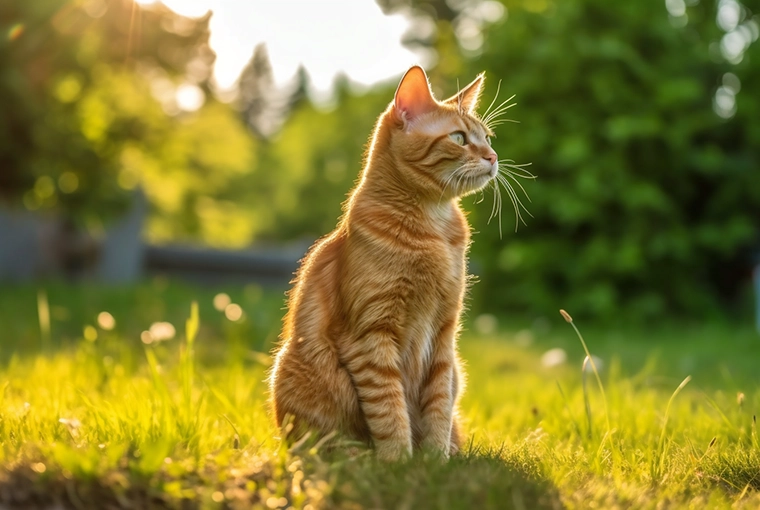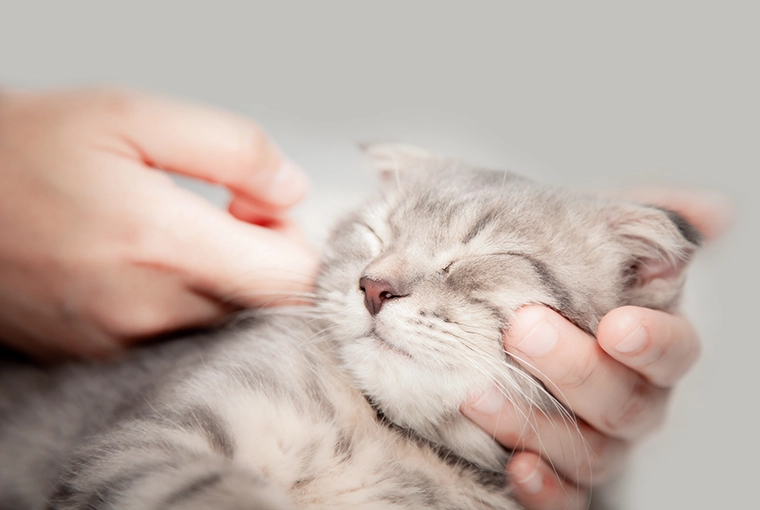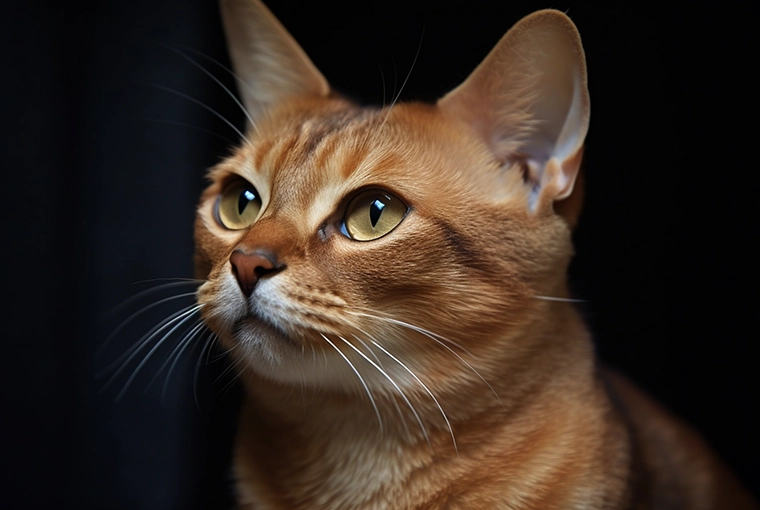As much as we adore their fluffy coats and mesmerizing eyes, just like humans, felines can be prone to certain physical cat deformities. These unique physical conditions can be due to a variety of factors, ranging from genetic mutations to birth defects. In this post, we’ll delve into seven common physical conditions in cats, exploring what causes them, how they affect our feline friends, and how they’re managed.
- #1. Polydactyly: Extra Toes for Extra Love
- #2. Tail Deformities: The Tale of the Tail-less Cats
- #3. Heterochromia: The Allure of Two-Colored Eyes
- #4. Scottish Fold Syndrome: More Than Just Cute Ears
- #5. Dwarfism: Small Stature, Big Personality
- #6. Head Defects in Cats
- #7. Cleft Palate: Beyond That Unique Grin
- Deformities vs. Disorders: Is There a Difference?
- Closing Thoughts: Celebrate Your Cat’s Uniqueness!
#1. Polydactyly: Extra Toes for Extra Love
Do you remember our article on 5 Fascinating Facts About Cat Toe Beans? We mentioned a condition known as polydactyly, where cats are born with more than the usual number of toes. It’s particularly common in certain breeds like the Maine Coon. While it might look a little unusual, most polydactyl cats lead perfectly normal lives.

In serious cases, extra toes may need to be removed if they cause discomfort or health issues. For example, if the extra toes are not fully formed, they may dangle loosely and risk being caught or torn in normal activities like climbing or scratching. Another instance could be if the additional toe is causing the cat to walk improperly, leading to pain and long-term joint problems.
As a cat owner, it’s crucial to monitor any signs of discomfort in your polydactyl cat. This could include limping, excessive licking or chewing at the paw, reduced mobility, or reluctance to play or climb. Moreover, if the cat seems to favor certain paws over others, it could be an indication that the extra toes are causing some distress. If you notice any of these signs, it is highly recommended to consult with your vet for professional treatment.
#2. Tail Deformities: The Tale of the Tail-less Cats
When you think of a cat, one of the first things that likely comes to mind is its graceful, swishing tail. But did you know there’s a breed of cat that often doesn’t have a tail at all? The Manx cat is known for its absence of a tail, resulting in a naturally occurring genetic mutation. This unique trait can sometimes lead to a serious condition known as Manx Syndrome.
Veterinary Partner (VIN) describes Manx Syndrome as a collection of disorders, involving the function of the hind legs, urinary bladder, and colon in certain cats, due to their shortened spine and tail. Cats suffering from this syndrome often have difficulty walking, and challenges in bowel movements that can cause chronic constipation or fecal incontinence. Some cats may also have difficulty urinating or may not be able to control their urination, leading to frequent accidents.

#3. Heterochromia: The Allure of Two-Colored Eyes
Have you ever seen a cat with two different colored eyes? This fascinating condition is known as Heterochromia, and while it’s not exactly a deformity, it is a genetic abnormality, particularly in cats with white fur.

The difference in coloration is usually due to varying levels of melanin, the pigment that gives color to our skin, hair, and eyes. While heterochromia is generally benign, it can sometimes be associated with other health issues such as Waardenburg Syndrome or Uveitis, so it’s always best to have a vet check it out.
#4. Scottish Fold Syndrome: More Than Just Cute Ears
With their unique folded ears and owl-like appearance, Scottish Fold cats are undeniably adorable. However, the same genetic mutation that causes their distinctive ears can also lead to serious health issues. Known as Scottish Fold Syndrome, this condition affects the cartilage throughout the cat’s body, potentially leading to a painful and debilitating condition called osteodystrophy. This is a stark reminder that certain breed-specific features can sometimes come with hidden health risks.

#5. Dwarfism: Small Stature, Big Personality
Dwarfism is a genetic condition that results in shorter-than-normal legs. Seen in breeds like the Munchkin cat, dwarfism is a genetic condition that affects bone growth. Despite their small stature, these cats are known for their playful and outgoing personalities.

#6. Head Defects in Cats
For cats with Burmese Head Defect, there is, unfortunately, little that can be done due to the severity of the condition. Breeding from affected cats or their relatives is strongly discouraged. On the other hand, Vestibular Syndrome often resolves on its own but requires careful monitoring and potentially, supportive care from a veterinarian.
Burmese Head Defect: A Severe Condition in Burmese Cats
The Burmese Head Defect, also known as Burmese Craniofacial Defect, is a severe and usually lethal malformation of the head and face seen in Burmese cats, especially in Australia. Affected kittens are usually stillborn or die shortly after birth. This condition is a genetic disorder specific to the Burmese breed and is a major concern for breeders.

Feline Vestibular Syndrome: The Dizzying Reality
Vestibular Syndrome is a condition that affects a cat’s balance, often leading to dizziness, unsteady movement, and a notable head tilt. This condition results from issues with the inner ear, where the vestibular system (responsible for maintaining balance) resides. Cats with this syndrome may walk with their heads down or may display nystagmus, a condition where the eyes move back and forth in a strange, rhythmic pattern.
#7. Cleft Palate: Beyond That Unique Grin
A cleft palate is a physical deformity where the cat’s palate (the roof of the mouth) doesn’t fully close, leaving a gap. This can lead to issues with feeding and can be a potential passage for food and liquid to get into the nasal cavity, leading to respiratory issues.

It can be detected at birth and is often corrected through surgery. However, not all cats with this condition require surgery, and many can live normal lives with the proper care and attention. Regular vet check-ups are crucial to monitor the condition and prevent complications.
Deformities vs. Disorders: Is There a Difference?
As we’ve discussed these common cat deformities, you might be wondering: what’s the difference between a deformity and a disorder? In essence, a deformity is a physical abnormality that’s often visible, like the conditions we’ve covered in this post. A disorder, on the other hand, refers to a malfunction in a cat’s body, which may or may not be visible.
Genetic Testing: Identifying Potential Health Risks
Given that many of these conditions are genetic, you might be wondering how you can ensure your cat’s health. One effective way is through genetic testing. This can help identify potential health risks, allowing you to manage them proactively. If you’re considering adopting a kitten from a breed known for certain genetic disorders or deformities, genetic testing can provide valuable insight into their future health.
While some cat deformities are visually apparent, others can influence behavior and preferences due to genetic variances. For example, did you know that a cat’s genetic makeup can even influence its response to stimuli like catnip? Check out our other article, The Ultimate Guide to Catnip and its Feline Wonders! to learn more about this fascinating subject.
Closing Thoughts: Celebrate Your Cat’s Uniqueness!
While physical deformities in cats can sometimes pose health challenges, many cats with these conditions live happy and fulfilling lives. The key is understanding these conditions, regularly consulting with a vet, and providing the appropriate care. After all, it’s these unique traits that often endear our feline friends to us the most. So cheers to embracing the uniqueness of our cats – in all their wonderful shapes and sizes!

